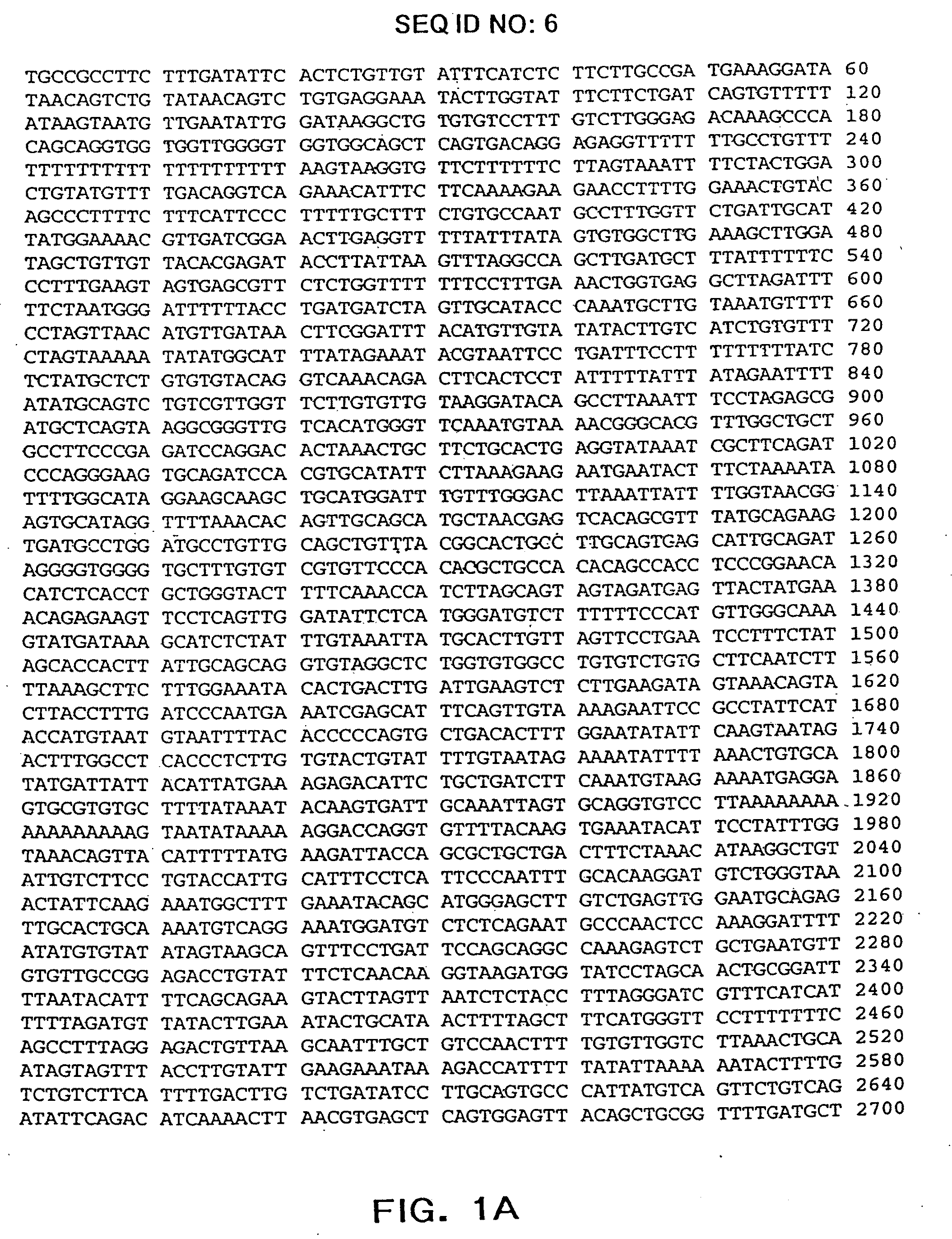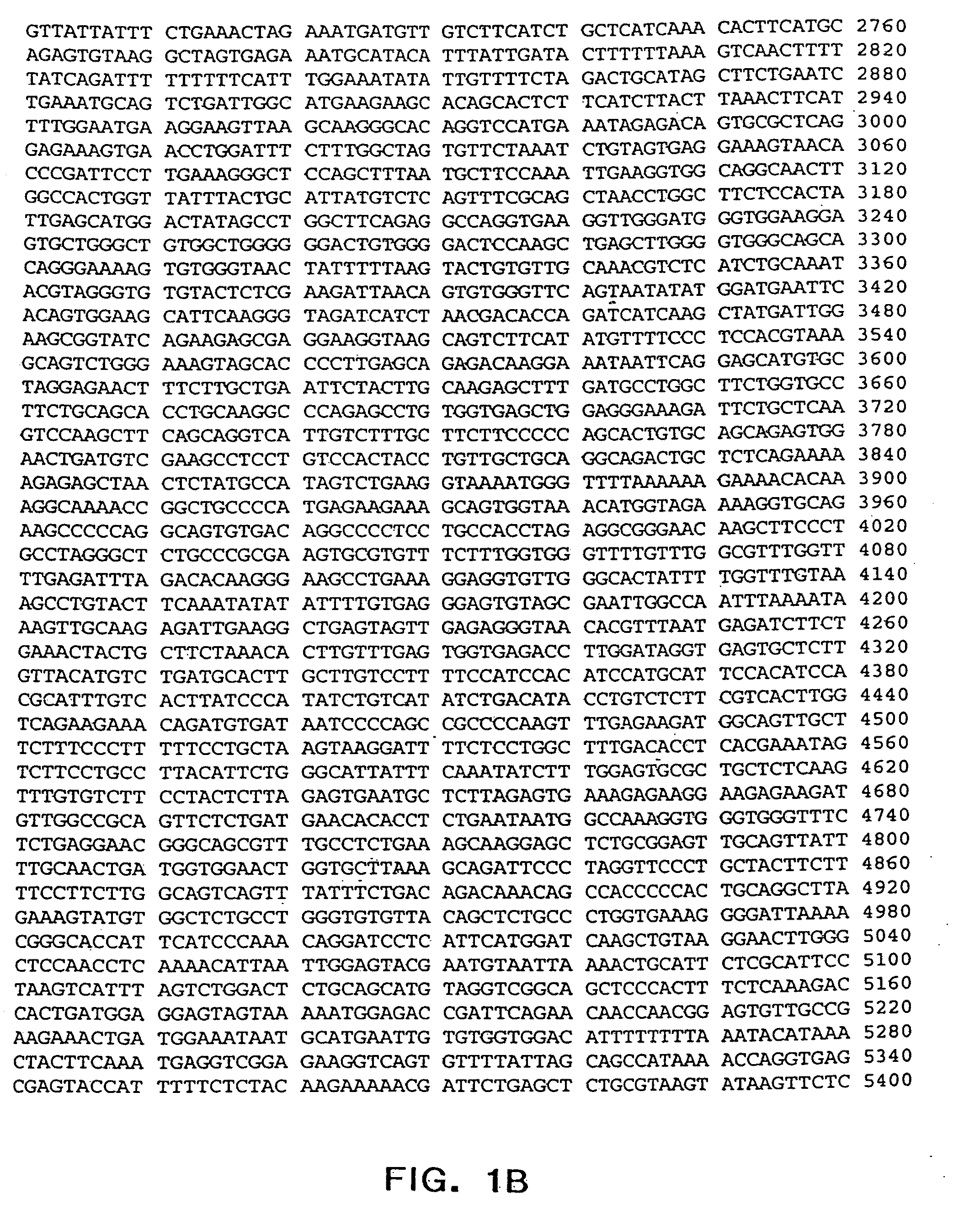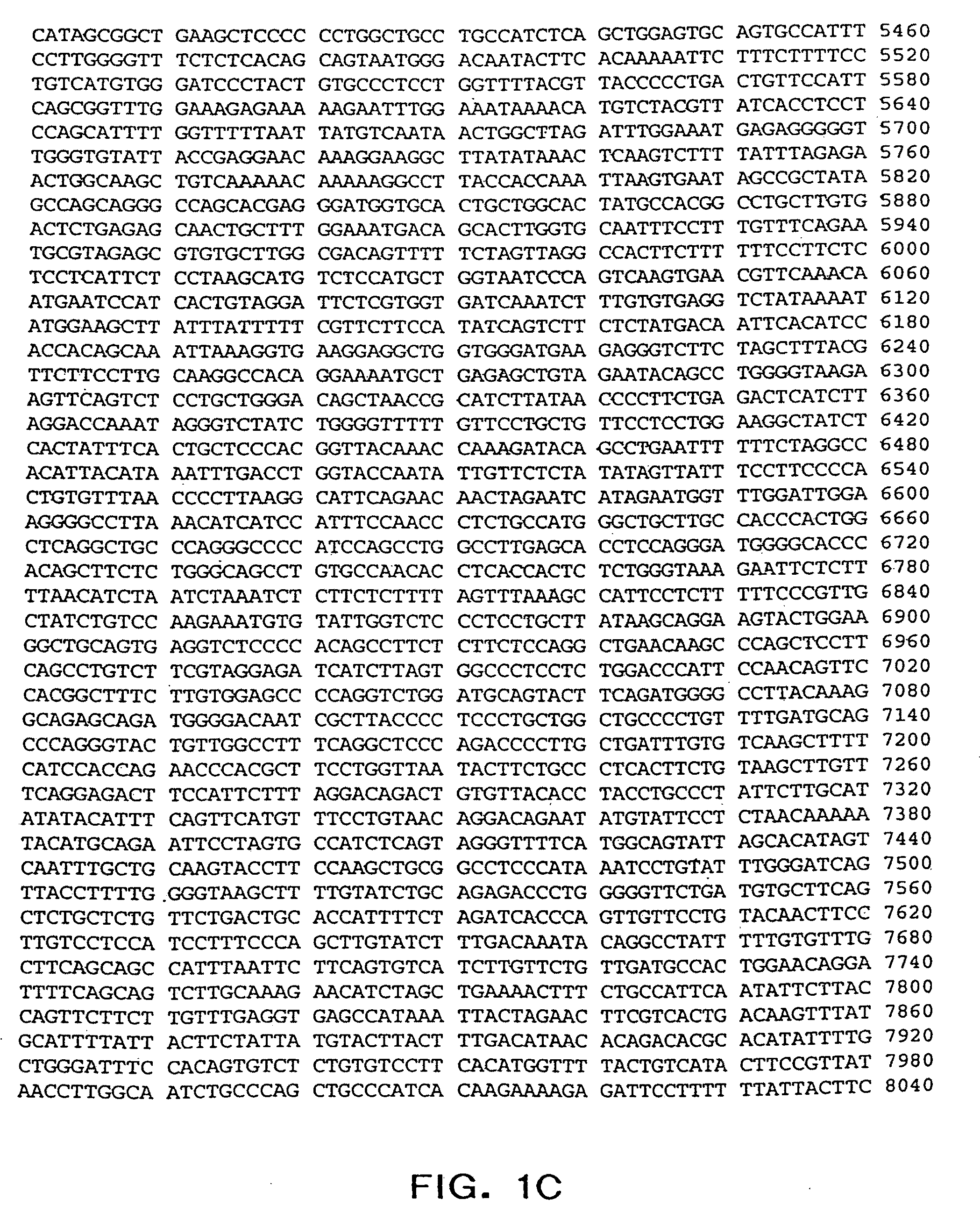Antibodies produced in the avian oviduct
a technology of antibodies and avian oviducts, which is applied in the field of producing transgenic avians, can solve the problems of limited success, increased production costs of individual animals, and increased production costs of transgenic avians using microinjection techniques,
- Summary
- Abstract
- Description
- Claims
- Application Information
AI Technical Summary
Benefits of technology
Problems solved by technology
Method used
Image
Examples
example 1
Cytoplasmic Microinjections
[0281](a) Preparation of DNA for microinjection: The plasmid pAVIJCR-A115.93.1.2 (containing the −12.0 kb lysozyme promoter controlling expression of human interferon α2b) was purified with a QIAGEN® Plasmid Maxi Kit (QIAGEN®, Valencia, Calif.), and 100 μg of the plasmid were restriction digested with Notl restriction enzyme. The digested DNA was phenol / CHCl3 extracted and ethanol precipitated. Recovered DNA was resuspended in 1 mM Tris-HCl (pH 8.0) and 0.1 mM EDTA, then placed overnight at 4° C. DNA was quantified by spectrophotometry and diluted to the appropriate concentration. DNA samples which were bound with the SV40 T antigen nuclear localization signal peptide (NLS peptide, amino acid sequence CGGPKKKRKVG (SEQ ID NO: 12)) were first resuspended in 0.25 M KCl, and NLS peptide was added to achieve a peptide DNA molar ratio of 100:1 (Collas and Alestrom, 1996, Mol. Reprod. Develop. 45: 431-438, the contents of which are incorporated by reference in it...
example 2
PCR Analysis of Chick Blood DNA
[0285](a) DNA extraction. Whole blood from one-week old chicks was collected with heparinized capillary tubes. Red blood cell (RBC) nuclei were released and washed with lysis buffer solution. DNA's from RBC nuclei were extracted by digestion with proteinase K (1 mg / ml) and precipitated with ethanol. Purified DNA was resuspended in 1 mM Tris-HCl (pH 8.0) and 0.1 mM EDTA and quantitated.
[0286](b) PCR analysis of chick blood DNA. Genomic DNA samples from one-week old chicks were analyzed by PCR using primers LYS051 for (5′-TGCATCCTTCAGCACTTGAG-3) (SEQ ID NO: 13) and IFN-3 (5′-AACTCCTCTTGAGGAAAGCC-3′) (SEQ ID NO: 14)). This primer set amplifies a 584 by region of the transgene carried by the pAVIJCR-A115.93.1.2 plasmid. Three hundred nanograms of genomic DNA were added to a 50 μl reaction mixture (1 XPromega PCR Buffer with 1.5 mM MgCl2, 200 μM of each dNTP, 5 μM primers) and 1.25 units of Taq DNA polymerase (Promega). The reaction mixtures were heated for...
example 3
Human Interferon α2b Expression in Chick Serum
[0287]One week after hatching, blood was collected from chicks using heparinized capillary tubes. Blood was then added to an equal volume of phosphate buffered saline, centrifuged at 200×g, and 100 microliters of the supernatant were assayed by human IFN ELISA (PBL Biomedical Laboratories, New Brunswick, N.J.), as shown in FIGS. 8 and 9.
PUM
| Property | Measurement | Unit |
|---|---|---|
| wavelength | aaaaa | aaaaa |
| wavelengths | aaaaa | aaaaa |
| wavelengths | aaaaa | aaaaa |
Abstract
Description
Claims
Application Information
 Login to View More
Login to View More - R&D
- Intellectual Property
- Life Sciences
- Materials
- Tech Scout
- Unparalleled Data Quality
- Higher Quality Content
- 60% Fewer Hallucinations
Browse by: Latest US Patents, China's latest patents, Technical Efficacy Thesaurus, Application Domain, Technology Topic, Popular Technical Reports.
© 2025 PatSnap. All rights reserved.Legal|Privacy policy|Modern Slavery Act Transparency Statement|Sitemap|About US| Contact US: help@patsnap.com



